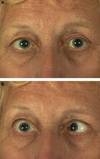Neurological Examination - SRS Flashcards
(79 cards)
What are four questions to ask when evaulating pt. neuro system?
- Local or diffuse?
- How has it developed over time?
- Restricted to nervous system or include other systems?
- CNS, PNS or Both?
What are the six tests we use for the neuro examination?
- Mental Status Examination (MSE)
- Cranial nerves
- Cerebellum
- Motor
- Sensory
- Deep Tendon Reflexes
What are the five components of the mental status exam?
- Appearance and behavior
- mood/affect
- speech/language
- thoughts/perceptions
- cognitive/executive function
What percent of Primary care visits are due to depression?
30%
What does alert and oriented x3 mean?
Person, place and time
What is the definition of lethargic?
(sleepy): awake, but tending to fall asleep if not gently stimulated
What is the definition of stupor?
Falling asleep unless vigorously stimulated
When observing a patients affect and expressions what are some things you might want to key in on?
- Appropriate forsituation?
- Engaged?
- Angry?
- Anxious?
- Indifferent?
- Detached?
- Fearful?
What are some sypmtoms of anxiety?
Palpitations
tremors
breathless
numbness
dry mouth
What should the clinical exam of language include? (6)
- Spontaneous Speech
- Naming
- Comprehension
- Repetition
- Reading
- Writing
When checking a patients language capacity you are testing aphasia, what is this?
Disorder in producing or understanding language
When testing spontaneous speech what should you look for?
- Articulation (dysarthria)
- Appropriate word finding
- Is there normal prosody (melody or variable tone of speech)
- Verbal fluency (rate, flow, volume, content, meaning and melody)
What should you do to test for aphasia?
- Naming: Test the ability to name objects
- Comprehension: Follow commands
- Repetition: have patient repeat some simple words or a phrase.
- Reading and writing with short exercises
What does anomia mean?
Inability to name common objects.
What is the most common deficit in true aphasia?
Anomia
What does dysphasia mean?
- Impairment in use of speech that is clear “Dys-phasia”
- Failure to arrange properly in sentence
What is dysarthria?
Imperfect articulation due to lack of motor coordination; damaging event CNS or PNS. Language comprehension and use may be fine
Aphasia may be the only sign of a new neurological disease such as?
Stroke
tumor
head trauma
recent seizure
What is the role of Wernike’s area?
transforms sensory input into neural word representations to give a word meaning.
What is the role of Broca’s area?
transforms these neural word representations into actual articulations that can be spoken.
What is Broca’s Aphasia?
“Expressive” Aphasia, understanding of spoken language mostly preserved.
What is Wernicke’s Aphasia?
“Receptive” Aphasia, fluent speech that makes no sense
What is Apraxia?
Inability to turn verbal request into motor performance
What do apraxic patients have difficulty with?
•complex yet familiar activities, such as dressing or taking a shower, writing with a pen or pencil, using a comb or toothbrush, mimicking an examiner














